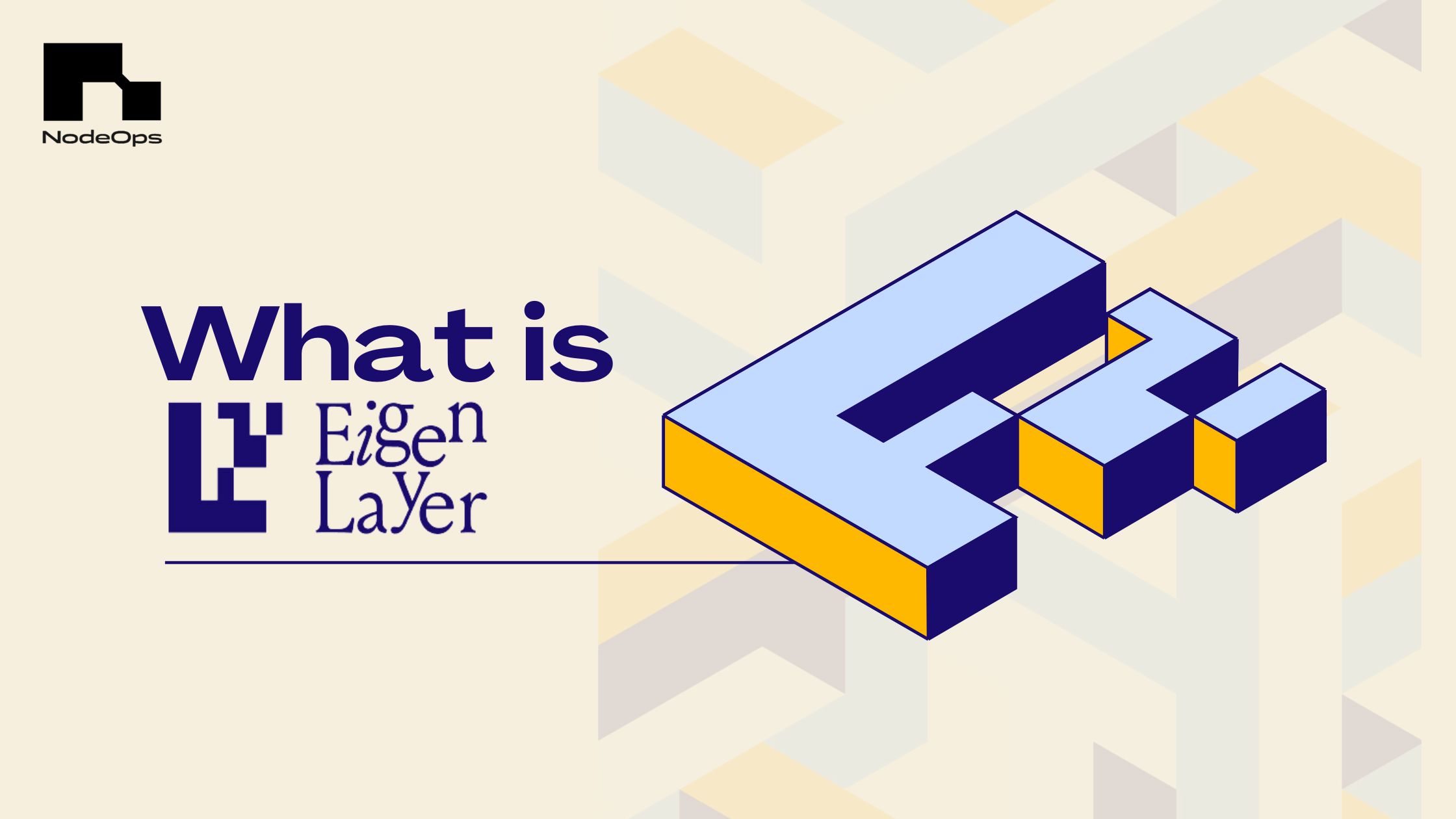EigenLayer is a rather innovative protocol built on Ethereum that's shaking up the world of staking. With its concept of "restaking," EigenLayer is allowing users to leverage their staked ETH in exciting new ways, while also fortifying the security of the entire Ethereum ecosystem. The protocol launched their mainnet on April 9, 2024, and the convenience level for users just shot up.
Intrigued? Let's dive in.
EigenLayer Explained
Generally, when you stake your Ethereum on the network, you're locking up your ETH to help validate transactions and secure the blockchain. In return, you earn yields. Fairly elementary stuff for anyone involved in the web3 space.
Here's where EigenLayer comes in - it allows you to take that staked Ethereum and restake it somewhere else.
The EigenLayer staking concept allows the rehypothecation of ETH on the consensus layer. In plain English, it means you can reuse your staked ETH to provide security for other applications on the network, all while earning additional rewards- this concept is called staking.
How does this provide security to the network? By enabling people to restake their Ethereum in different places, EigenLayer is spreading the staked Ethereum across the ecosystem, making it harder for any single entity to gain too much control. It’s a great way to combat the centralization arguments that anti-PoS folks bring in.
The Magic of Restaking
Restaking, as we know, involves using already staked crypto like ETH to provide security to other protocols. By allowing stakers to reuse their ETH across multiple services, EigenLayer significantly reduces the capital costs for participants. This means more efficient use of resources and a more robust security model overall.
But the benefits don't stop there. Restaking also opens up a world of possibilities for developers. With access to Ethereum's vast pool of staked ETH and its decentralized validator set, builders can now create applications that were previously unfeasible due to security constraints. EigenLayer is fostering an environment of permissionless innovation, where the only limit is the developer's imagination.
For stakers, the allure of restaking is clear: increased rewards. By opting in to secure additional applications called Actively Validated Services or AVSs, stakers can earn protocol fees and rewards on top of their regular staking returns. Developers win too, they get to use the robust security mechanism of Ethereum without having to build their ecosystem and token.
Of course, restaking does come with some additional risks. Stakers who opt-in to EigenLayer are exposed to potential slashing penalties if they engage in malicious behavior. However, these risks are reasonably mitigated by the protocol's carefully designed incentive structure, which ensures that honest participation is always the most profitable strategy.
The Nuts and Bolts of EigenLayer
Under the hood, EigenLayer is powered by three key components: restakers, operators, and actively validated services .
Restakers are the heart of the protocol – they're the ones who contribute their staked ETH or liquid staking tokens to the ecosystem. Native ETH stakers can set up EigenPods, while LST holders can restake their tokens directly through the EigenLayer smart contracts/
Operators play a crucial role in the restaking process by running the software for the various AVS built on EigenLayer. They register with the protocol and allow restakers to delegate their stake, providing the validation services that keep everything running smoothly.
Then there are the AVS themselves – the applications that leverage Ethereum's pooled security through EigenLayer. These can include everything from data availability layers and Oracle networks to fast finality chains and beyond. The possibilities are endless, and we're just scratching the surface of what can be built on this powerful primitive.
The Future is Bright with EigenLayer
As Ethereum continues to evolve, EigenLayer is poised to play a pivotal role in its future. By aggregating and optimizing the security of the network, this groundbreaking protocol is paving the way for a new era of innovation and growth.
For developers, EigenLayer represents a paradigm shift in how they approach building on Ethereum. No longer constrained by the need to bootstrap their own validator sets, builders can now focus on what they do best – creating groundbreaking applications that push the boundaries of what's possible.
For stakers, EigenLayer is a game-changer. With the ability to earn additional rewards and contribute to the security of a wide range of applications, staking has never been more rewarding or impactful. As the ecosystem grows and more AVS comes online, the opportunities for stakers will only continue to expand
For the Ethereum community as a whole, EigenLayer is a powerful tool for strengthening the network's security and resilience. By aligning incentives and fostering collaboration between stakers, operators, and developers, EigenLayer is helping to create a more robust and antifragile ecosystem that can withstand the challenges of the future.
So, whether you're a staker looking to maximize your yield, a developer eager to build the next big thing, or simply a believer in the transformative potential of Ethereum, EigenLayer is a protocol worth paying attention to. Its restaking capability is a major part of what makes EigenLayer such an exciting development in the world of Ethereum. It unlocks new earning opportunities for stakers, while also strengthening the overall health and decentralization of the network. As more people start to discover the benefits of restaking, we expect to see EigenLayer become an increasingly integral part of the Ethereum ecosystem.
NodeOps brings simplified infrastructure for node operators and developers, allowing one-click deployment across blockchains and protocols, powered by AI. We expect to be a part of the EigenLayer ecosystem soon enough! Visit us today to know more


